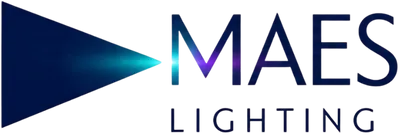
Hazardous Location vs. Explosion-Proof Lights: Classifications Explained | Maes Lighting
In industrial settings where flammable gases, vapors, or dust are present, choosing the right lighting is critical for safety. Hazardous location lights and explosion-proof lights are often discussed, but their differences and classifications can be confusing. At Maes Lighting, we specialize in lighting solutions for high-risk environments, offering both hazardous location and explosion-proof LEDs. This guide breaks down the distinctions between these lighting types and explains the classifications to help you select the right solution for your facility.
Hazardous Location Lights vs. Explosion-Proof Lights
While the terms are sometimes used interchangeably, hazardous location lights and explosion-proof lights have distinct purposes, though both are designed for safety in volatile environments.
What Are Hazardous Location Lights?
Hazardous location lights are broadly designed for areas with flammable substances, ensuring safe operation without igniting the surroundings. They include various types, such as intrinsically safe, vapor-tight, or explosion-proof lights, depending on the specific hazard. Our vapor-tight LEDs are an example, suitable for wet or dusty hazardous areas but not necessarily explosion-proof.
What Are Explosion-Proof Lights?
Explosion-proof lights are a specific subset of hazardous location lights, engineered to contain any internal explosion or spark, preventing it from igniting external flammable materials. They are built with robust enclosures to withstand and contain explosions. Our EXI Series explosion-proof lights are certified for use in high-risk environments like oil refineries, meeting strict UL844 standards.
Understanding Hazardous Location Classifications
Hazardous locations are classified by the National Electrical Code (NEC) into Classes, Divisions, and Groups, which determine the type of lighting required. These classifications help ensure safety and compliance.
Class I: Flammable Gases and Vapors
Class I locations contain flammable gases or vapors, such as in oil refineries or chemical plants. They are divided into Division 1 (where hazards are present under normal conditions) and Division 2 (where hazards are present only under abnormal conditions). Explosion-proof lights, like our EX-MV01 portable work light, are ideal for Class I environments, ensuring safety by containing sparks. OSHA provides detailed guidelines for Class I safety.
Class II: Combustible Dust
Class II locations, such as grain silos or flour mills, involve combustible dust. Division 1 indicates a constant dust presence, while Division 2 indicates dust presence only during abnormal conditions. Our high bay explosion-proof LEDs with dust-tight seals are designed for Class II environments, preventing ignition risks.
Class III: Ignitable Fibers and Flyings
Class III locations, like textile mills, involve ignitable fibers or flyings. These areas require lighting that prevents ignition from heat or sparks. Our explosion-proof floodlights are suitable for Class III, ensuring safe illumination in fiber-rich environments.
Groups and Zones: Further Classification
Within each Class, Groups specify the type of hazardous substance (e.g., Group A for acetylene, Group E for metal dust), while Zones (used in the IEC system) define the likelihood and duration of the hazard’s presence (Zone 0–2 for gases, Zone 20–22 for dust). Explosion-proof lights are often rated for specific Groups and Zones, ensuring compatibility with the environment. The National Fire Protection Association provides detailed standards for these classifications.
Benefits of Choosing the Right Lighting
Selecting the appropriate lighting for hazardous locations ensures safety, compliance, and efficiency.
Safety and Compliance
Explosion-proof lights, like our Diamond Series NSF-rated LEDs, ensure compliance with NEC and OSHA standards, reducing the risk of explosions or fires in hazardous areas.
Durability and Efficiency
Both hazardous location and explosion-proof LEDs are built to withstand harsh conditions, using corrosion-resistant materials. They also offer energy savings, with LEDs consuming up to 70% less energy than traditional lighting, as noted by the U.S. Department of Energy.
Why Maes Lighting for Hazardous Environments
Since 2008, Maes Lighting, based in Broken Arrow, Oklahoma, has been a trusted provider of industrial LED lighting. Our UL/ETL-rated products are designed for safety and durability in hazardous environments. Contact us at (866) 860-6399 or visit our contact page to discuss your lighting needs.
Conclusion
Understanding the differences between hazardous location and explosion-proof lights, along with their classifications, is key to ensuring safety in high-risk environments. Maes Lighting offers a range of solutions to meet your needs, from explosion-proof to vapor-tight LEDs. Explore our full LED collection to find the right lighting for your facility today.



